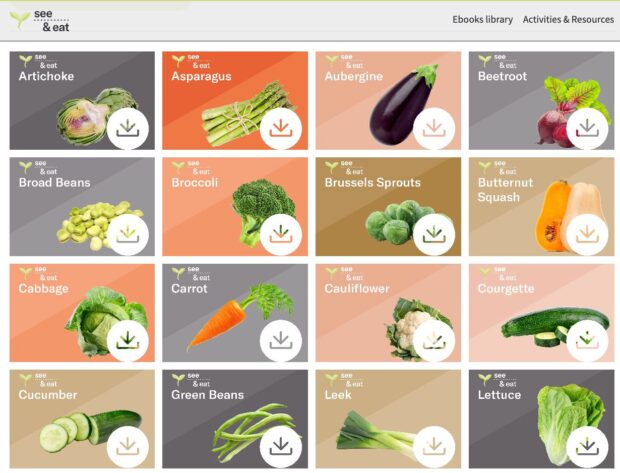
Move over, Peppa Pig. The new stars of children’s books will be broccoli, eggplant, asparagus, spinach, or parsnips. Because when vegetables take a leading role in bedtime stories, kids could be less likely to turn their noses up at them at mealtimes, research suggests.
Watch out for a new gang of kids’ ebook heroes taking the form of bell peppers, peas or cucumbers, on hand to help parents who want to foster their children’s love of vegetables. The See & Eat platform, developed in collaboration with the FoodUnfolded portal, funded by the European Institute of Innovation and Technology (EIT Food), makes available a series of ebooks via the Our Story 2 app. To be viewed on a tablet, computer or smartphone, these books have vegetables as their stars.
Just like in any children’s book, each vegetable is the star of its own story, with a presentation of its visual characteristics, its varieties, and the ways it is grown and harvested. The story is told all the way to the plate, taking readers into the kitchen to describe how a bell pepper or a zucchini is peeled and cooked. With the help of various photos, the structure of each book is as straightforward as a regular bedtime story.
The aim of this ebook series is to get young taste buds to accept vegetables on their plates without sulking or causing a fuss. And it works, according to the findings of British researchers. Food neophobia in young children is a well-known phenomenon, widely described by neurobiologists. In fact, studies show that it can take between 8 and 10 presentations of a new food for a young child to finally accept it.
In the United Kingdom, many children eat fewer than the five recommended portions of vegetables a day, says the study, which evaluated the impact of visual familiarization with vegetables. The experiment involved looking at an ebook about a vegetable that the little guinea pigs had never tasted before to evaluate its effect on willingness to taste, intake and liking of the vegetable targeted by the ebook and a control vegetable.
Over the course of two weeks, the young readers learned all about a particular vegetable, which parents reported helped them to accept it more readily on their plates.
“Willingness to taste and intake ratings improved for the target vegetable, but not the control vegetable, while liking was reported to increase for both vegetables,” the study authors state.
Obesity is on the rise among young French people, according to a recent alert from the country’s National Institute of Health and Medical Research, Inserm. In this context, familiarity with foods as a means to better appreciate them is an essential issue that has been highlighted by various studies.
In 2021, a study by the Association Santé Environnement France indicated that 87% of French children aged 8 to 12 years old had little knowledge of fruits and vegetables, not knowing how to recognize an artichoke, a zucchini or a beet. The analysis also revealed that 40 percent of schoolchildren did not even know where a burger patty comes from, while only a third could accurately identify the composition of pasta.
In the United States, a study published by the Sapien Journal sparked surprise by sharing the views of young Americans between the ages of 4 and 7: for more than a third of them, bacon, hot dogs, burgers and cheese were made from plants!